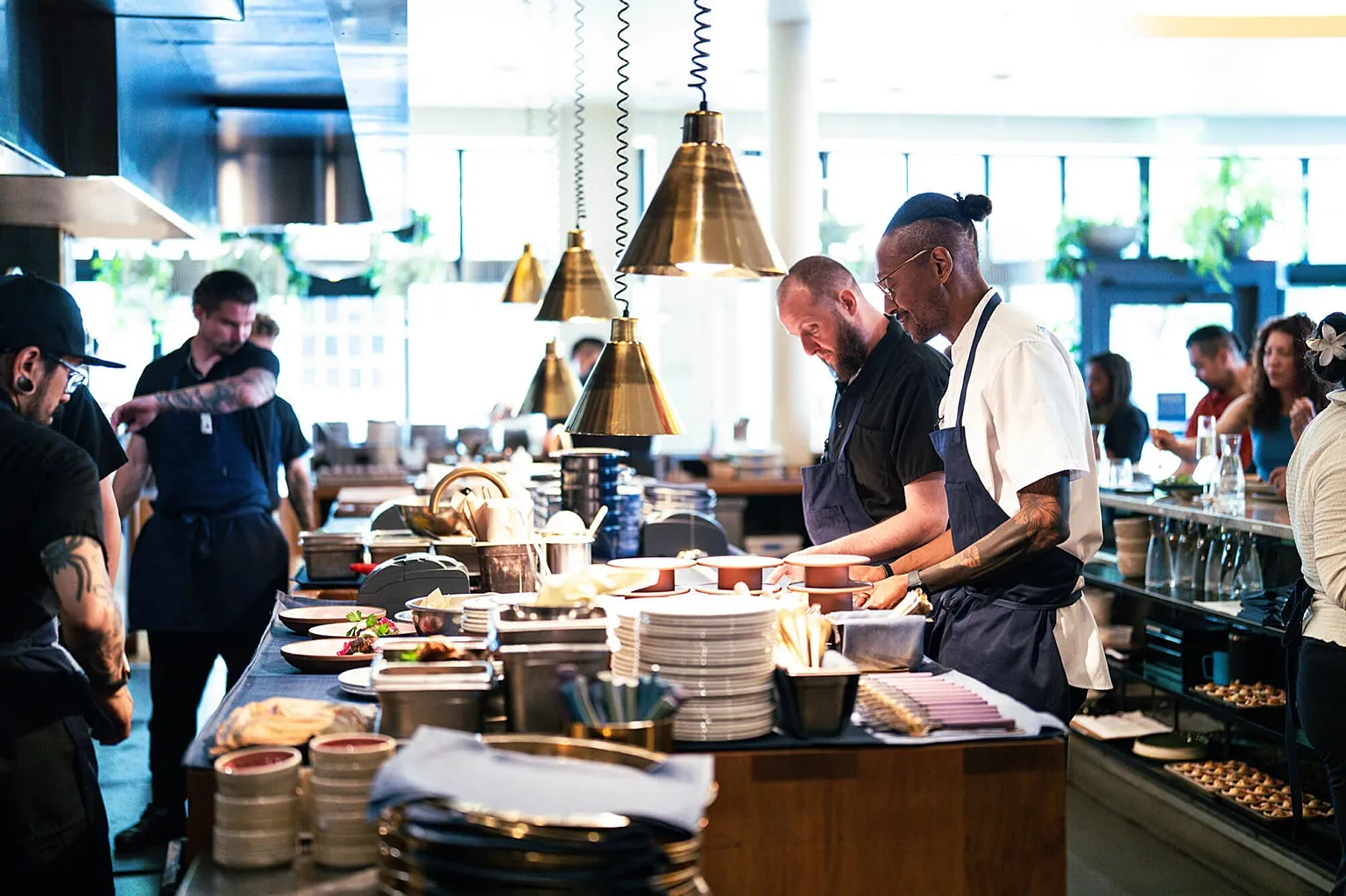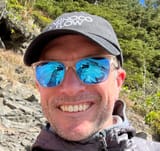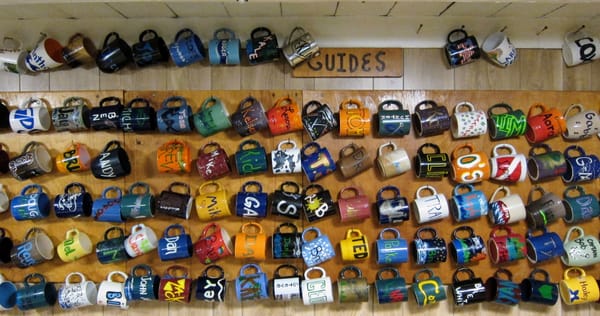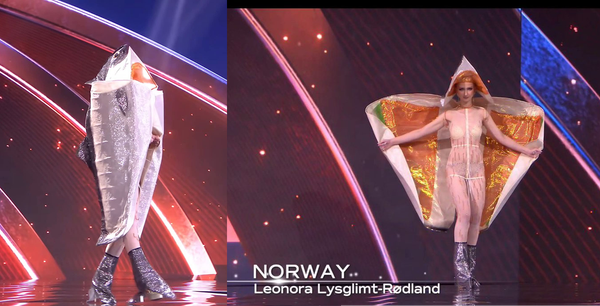Salmon without fish: Lab-grown seafood earns FDA approval, and a spot on the menu at Portland's Kann
With recently-granted FDA approval and a summer slot on the menu at Portland hotspot Kann, lab-grown salmon is in the spotlight. I talked with Justin Kolbeck, co-founder of cultivated seafood startup Wildtype.

CFSers: When I learned lab-grown salmon was coming to Kann, a hot Portland restaurant helmed by three-time James Beard Award-winning chef Gregory Gourdet, I had to learn more.
I knew about lab-grown beef. But I had never heard about "cultivated" (industry terminology) salmon. The more I thought about the promise and potential outcomes of more lab-grown seafood, the more interested I was. As a conservationist, an angler, and someone who loves eating salmon.
Fisheries scientist Jim Lichatowich titled his definitive history of the Pacific salmon crisis Salmon Without Rivers. Now, we have salmon without the sea.
And, truly, salmon without fish.
Opportunity amid crisis
You don't have to have wept softly to yourself while watching David Attenborough's most recent film, Ocean, to know we're in the midst of a crisis. (Though I tried it.)
Everywhere you look, especially in our seas, greed is seems to be extinguising life on Earth. Many living things—other than humans—are teetering on the brink. Closer to home, $9bn spent on Columbia Basin habitat upgrades have failed to improve the fate of wild salmon.
Wildtype is positioning itself as not just an alternative, but a potential ally in the effort to restore salmon habitats. It seems simple. More fish for their broader ecosystem benefit. More fish for fly-fishing. What's not to love?
SaaS: Salmon as a Startup
It turns out this summer is a big one for San Francisco-based lab-grown seafood company Wildtype. It was granted FDA approval for its product earlier this month, and is aiming to be served in five restaurants soon.
Founded in 2016 by Justin Kolbeck and Aryé Elfenbein, Wildtype has raised over $120mm to develop a process for creating lab-grown seafood.
The production process of cultivated meat is complex. But it's essentially a mixture of the starter cells, a growth medium, an incubation and agitation chamber, and a structure for them to grow on. Timing and temperature are modified to see what does the job best.
Investors in the company's $100m Series B fundraising round, closed in 2022, include actors Leonardo DiCaprio and Robert Downey, Jr., Bezos Expeditions, food producer Cargill, and Singaporean state investment firm Temasek.
Wild fish populations are threatened more than ever before. I’m pleased to be an investor in @wildtypefoods, the clear leader in cultivated seafood, which will give us the chance to protect our oceans while creating the cleanest seafood on the planet. https://t.co/DWDkSyUuGl
— Leonardo DiCaprio (@LeoDiCaprio) February 23, 2022
If the venture is successful, with production no longer tethered to the ocean, you can imagine cultivated seafood produced near point of sale, with lower shipping costs. In a more sci-fi, solarpunk future, broad-based, cheap renewable energy might mean affordable small-scale bio-reactors offering a new twist on the neighborhood fish market.
But, cultivated proteins face headwinds. Last year Florida governor Ron DeSantis signed the first law in the United States to ban manufacturing, distributing, and selling lab-grown meat. DeSantis' beef is in part one of protectionism for Florida meat producers. Salmon fisheries may take a similar stance. The Florida law is being challenged by a lawsuit brought by a producer of lab-grown chicken.
And attitudes—in the heartland at least—seem cool on cultivated meat according to a survey from the Iowa Farm Bureau. It found "only 21% of Iowa grocery shoppers are even somewhat likely to purchase lab-grown imitation meat."
But cows and chickens aren't going extinct any time soon. That's a fate that anyone concerned with salmon, as a fish, not just as a food, has contemplated. This makes Wildtype's efforts less clear-cut, to mix environmental metaphors, for both detractors and boosters.
As it creates its product, Wildtype is aligning itself with groups like The Conservation Fund to help its sustainability campaigning. TCF recently announced a 172-acre parcel transfer along the White Salmon River to the Yakama Nation, in part to help protect its salmon and steelhead run.
So I got in touch with Justin Kolbeck, Wildtype's co-founder, to learn about the latest news, puzzle over the ethics of "cultivated" seafood and the paradox at the heart of replacing a resource to conserve it.

Q&A with Wildtype co-founder Justin Kolbeck
CFS: Congratulations on your FDA milestone.
JK: Thanks. Nobody really knew how to regulate something like this when we started talking to the FDA and USDA back in 2018. It's been a long road but an important one. The process, together with the food regulators, is trying to think about every conceivable risk or hazard with the food, and how we're going to mitigate those. We'll have to go through the process again when we do a different type of seafood. But for now at least in the US we're good to go.
CFS: How did the collaboration with Gregory Gourdet and Kann come about?
JK: One of my crewmates used to work with him at Departures [Gourdet's previous restaurant]. Gregory's an MSC Ambassador and cares a heck of a lot about sustainability. So he was definitely open to the idea. And luckily we connected with him before he won a bunch of James Beard Awards.
Before we launched we were using him as a sounding board. And we talked to [Gourdet and other chefs] about how we should position the product with terminology that makes sense, the size, shape, exact dimensions. So the product we're selling now is a 220-gram block of sushi salmon. And it's designed so that from the first cut to the last cut, you're getting a perfect piece of sashimi or nigiri without any trim.
We're super excited just to see what guests think about this. In July we're going to be on the menu every day. How many people buy this? Who buys it? What are they saying about the product? Understanding consumer feedback in a really granular way is something I'm personally excited about.

CFS: Have you talked about other varieties?
JK: We're working on other things. We've been following the direction of some of our restaurant partners in terms of what they would like to see.
CFS: Learning about Wildtype immediately called to mind like some of the higher grades of tuna, chutoro and otoro, cuts with higher fat content. Which I assume is harder with the material you grow on, replicating fat cells versus muscle cells.
JK: We're not really at that stage yet, but for any type of seafood the first step is just to get a cell line established. In that sense it's not all that different from a starter yeast.
So you once you get the right type of cell, you figure out what kind of food it needs, temperature, and how fast you run a little impeller to keep the cells floating around so you can get them enough oxygen to be happy. Then the question is more about densities, and trying to get to the point where you can produce products in a cost-efficient way. Those are the steps for the salmon process, and that took us a number of years of hard work.
We're at a point now, at least with the salmon, that we feel pretty good we've got a good path to an affordable price in the not-too-distant-future.

Save on groceries, spend on fishing gear!
Cultivated salmon is spendy, but my buddy Bryan is bird-dogging loads of grocery deals around Portland.
He founded Stumptown Savings to help Portlanders shop smarter: Save time and money, shop seasonally in the community, and waste less.
His free newsletter goes out every Thursday, and curates the best deals in town from your favorites, whether you're more of a Whole Paycheck or Gross Out kinda shopper.
Stumptown Savings also covers farmers markets, local food producers, and his famous crowdsourced Egg Price Tracker.
If you ask me, anything that leaves more in the budget for fishing gear is a big win.
CFS: What species of salmon is it? Do you have a good sense of species, where it comes, down to the watershed level?
JK: In this case it was coho, but we've we've also worked with chinook. We haven't really done much with Atlantic salmon because it's actually kind of hard to get live Atlantic salmon.
CFS: You should try catching a Atlantic salmon on a fly. Do you buy the fish from a biological supply house, or work with a fisheries commission to harvest coho and preserve these cell lines? I know it's obviously not the right parallel, but it calls to mind The Immortal Life of Henrietta Lacks and the biological continuance of her cell line in biomedical research. Is it the same sort of process?
JK: We've had a wide number of people offering to help including some fly-fishermen up in British Columbia offering to give us fish. But the process works best when they're really young. At the fry stage, or even fertilized eggs. That's when we need them, and obviously you're not catching those. That's why we've had to work more with research institutions for example.
CFS: I mean, a lot of the fish I catch might qualify, size-wise. What kind of research guided you to go with coho as opposed to Chinook? Or was it just generally that chefs prefer this tissue density and format?
JK: We wanted to go with the fish the consumers are used to eating, yeah, so that was step one. Step two was, "What's local to us?" So we got the two big ones from the Bay Area up to the Northwest, so that's what we've been trying to focus on.
CFS: What have been the biggest hurdles?
JK: This was one of the hardest possible businesses we could have tried to start. For starters, the first step, just finding cell lines that can grow and be healthy enough at high densities to support commercial-scale growth at a reasonable cost.
There was a time where we didn't have any cell lines that were doing the things we needed them to do. We had everybody drop everything and focus on that problem for about a year. Once we had cells going, it was like "OK, well now our our feed is way too expensive. So let's slim that down and make it much cheaper." And that's that's been a multi-year journey. Then we had cells, but that does not make a nice beautiful delicious piece of food. Building food products from the cell up is not trivial.
I think we'll continue to improve the products little-by-little over the years ahead. On the investment front, in the early days it was like "Hey this is something that could work and this is important. We should all be caring about wild fish stocks, and here's why." And then for a minute alternative proteins were kind of the thing. Now, it's a tough fundraising environment for anybody other than like AI or defense. Honestly if we didn't have a lot of passion for this, we would have quit a long time ago.
"Honestly if we didn't have a lot of passion for this, we would have quit a long time ago."
CFS: It almost feels like that will inform your investor pool, where it's not just about the monthly active users on the end of a spreadsheet. Because you're going to figure out what the energy-in versus the protein-out bottom line.
But if you only look at the business in that dimension, you're never going to see the value to consumers around preservation of wild ecosystems. Or for people with an aversion to any kind of adulterants in their food. It's hard to quantify the value for somebody that's die-hard opposed to microplastics.
"A lot of our investors share the goal that we have to conserve wild fish stocks and protect wild places while finding a way to sustainably feed the next three billion people."
JK: There needs to be a mission element to this. A lot of our investors share the goal that we have to conserve wild fish stocks and protect wild places while finding a way to sustainably feed the next three billion people.
There's been a longstanding debate among people in the environmental movement. There's this great book called The Wizard and the Prophet. You've got the prophets who are just like "Hey, just don't eat. Don't eat stuff. Go easy on the planet. Don't drive, don't take jets." And then you've got the wizards, who are like "You know, maybe we can still consume stuff as long as we have technology pushing the way." I'd say we fit more into the wizard camp for sure.
But we've tried to use our platform to get people to think about their impact. To get people excited about conservation and the importance of keeping wild places wild. It's a huge part of why I do what I do.
CFS: It's an interesting paradox. We know healthy ecosystems can support big runs of wild salmon. But at the same time here in the Columbia River basin we've spent billions of dollars without discernible progress.
I'm sure you've puzzled over this because you seem like a thoughtful person, but how do people who are aware of the causes and effects that we see in the world and how we live, how might they consider cultivated salmon as an alternative to something that would be fine on its own, but...it's not?
I'm sure it tastes similar, and it's very hard to tell the difference, but the ethical thing feels like it's the big difference-maker. How should people think about it?
JK: Right now there're two ways to get fish: You can wild catch it. And I think everybody knows there's only so many fish in the sea. And then there's farming, and farming's got a lot of challenges. You've got skyrocketing demand for seafood and salmon in particular. Wild catch is capped, because Atlantic salmon are endangered. And wild catch on the Pacific side...our species on the West Coast are not looking great in terms of returns and size and all those things. We look at the long term trends, and it's not up and to the right. So that's wild caught.
And then on the farmed side, first of all, we import all of that now. In the United States we don't farm. [Ed: There are several remaining farmed salmon operations on the Atlantic coast of the United States, but they face increasing environmental and regulatory scrutiny, which closed Washington net-pen operations. The situation in Canada is similar.]
And so there's all the costs associated with that. There just aren't any more coastlines to farm fish. There're changes in sea temperature. Sea lice is a major challenge that I know the industry is grappling with. So the upshot of all of that is there's huge demand and not enough supply. And so what we've seen over the last 15 years is that in real terms, salmon has become less accessible to people, and prices have gone up.
What we're trying to do is scale up our production and make the product available to more people and bring the cost down. Trying to take some pressure off those two sources of supply. This won't appeal to everybody, and that's OK.
"This won't appeal to everybody,
and that's OK. "
There are chefs who've taken salmon off their menu who are excited to bring it back on with us. They don't want to take the orcas' food. But guests like salmon dishes, and this is a salmon dish—just made in a different way.
Ours has plants in it, because it's a combo of salmon cells and some plant-based ingredients like fat and protein. But we're aiming for something that has the same level of omega 3s, without the contaminants you get with wild fish, like parasites and heavy metals.
CFS: It is the ultimate "clean" protein, in a way that feels and still registers as an animal protein.
JK: You've got people interested in clean protein and trying to get contaminants out. Like microplastics and all the other things that are a byproduct of the pollution that we've put into the environment. For those people that have an open mind I think this is kind of an interesting solution. And I don't I don't know how big that consumer group is. We'll find out.
CFS: What's next?
JK: Over the next few months we're going to be rolling out to new restaurants in different states. We'll be in five states by the end of summer. In parallel we've got to build some more capacity, so that's going to require some capital. So we're having conversations with investors about trying to find the capital in this crazy market.
It's kind of paradoxical in a way, but we want wild fish stocks to stay robust. I want to take my kids fishing. And for them to have the same opportunities that we have, with their kids, to go fishing. That's not going to automatically happen. We have got to be really smart about conservation between now and then.
"We're not going to fix everything,
but we can do our part."
We inherited this world. I see what we're doing as a small part of helping to fix that. Taking some pressure off. We're not going to fix everything, but we can do our part.
This interview has been condensed and edited for clarity.
Of course, the proof of the pudding is in the eating, and so much will depend on how Wildtype's product actually tastes.
You can learn more about Wildtype and where its cultivated salmon will be available to try at wildtypefoods.com
Would you, if you could? Cool, or ick?
Subscribers: Tell us in the comments! 👇
Leaders ➰
Mindset 🧘♂️
In case you missed it last week, this whole public land sale thing is only getting worse the more we learn about it. Here's a primer on "How to Stop ‘The Big Bad Public Land Grab'" and fight for what's yours, from The Wstrn. (link)
Environment ⛰️
Renowned fly-fishing authority USA Today (ha) polled readers on the top 10 fly-fishing rivers in North America, and Michigan's AuSable, my ancestral hunting-grounds, was named number one. About the Grande Ronde, the only PNW river to make this year's list, USA Today writes, "steelhead trout can be encountered in abundance during fall and winter." Some might take issue with "abundance". How many have you fished? (link)
Tools 🎣
🎥 Inside the popper-dropper rig, using a nymph (like a balanced leech or stonefly) underneath a bass or panfish popper to get a fish's attention before offering an easier treat. (link)
Technique 🤺
Stripping a streamer is one of the places in fly-fishing where skill building and water assessment meet, and practice time pays off. How, why, and when you strip makes a huge difference. Midcurrent breaks down all the variables to bring into play. (link)
Conservation 🌲
Did you know there are over 4,000 species of native bees in North America? Here's how to help them thrive amidst widespread public lands grazing, where cattle are eating all their flowers. (link)
Community 🏘️
Word's spreading about the provision to sell public lands in the Big Bad Bamboozle Budget Bill. Backcountry Hunters and Anglers and more concerned groups are planning a day of action on Wednesday, June 26th. Make the calls, save your spots. (link)
The best time to go fishing is when you can get away.
— Robert Traver




